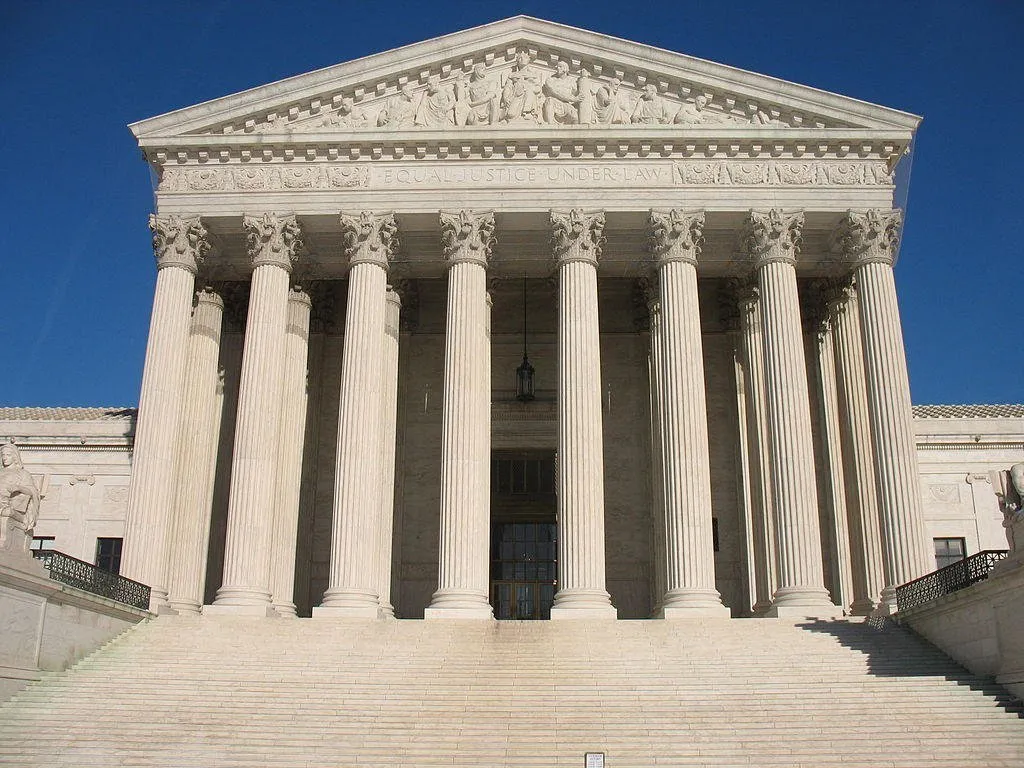This is a question that the 20th century philosopher and New York Yankees catcher might pose as the US Supreme Court struggles through its second existential crisis in the past 100 years. In both crises, Kentucky US senators played key roles.
The present crisis comes as Gallup’s public opinion polling shows that a majority (53%) of Americans disapprove of the job that our top court is doing, even as it faces several very divisive cases, most notably over the continuation of a woman’s right to choose on abortion. To put the present unpopularity of the Court in context, Gallup measured public disapproval at only 34% following the Court’s ruling on the controversial Bush v. Gore that threw the 2000 presidential election to George W. Bush.
Recently, a bi-partisan, blue-ribbon Presidential Commission on the Supreme Court of the United States, created by President Joe Biden, issued its draft final report. It details the unique political role of the Court in the nation’s history and the current partisan polarization that, if not reversed, will contribute in a meaningful way to the potential erosion of our democratic institutions in coming years.
An earlier SCOTUS confidence crisis
The nation trod this path before when a conservative Supreme Court blocked key components of the New Deal. President Franklin D. Roosevelt, coming off a crushing re-election win in 1936, called on the Congress to pass legislation to expand the Court. Ironically, this strategy was one developed by James C. McReynolds from Todd County in western Kentucky during his tenure as attorney general in President Woodrow Wilson’s first term. McReynolds in 1937 was perhaps the most anti-Roosevelt of the justices.
FDR’s call to “pack the court” aroused strong passions in the country and the Congress in 1937. The task of passing the plan fell largely to Senate Majority Leader Joe Robinson from Arkansas. The fight dragged into the summer which in those days, before the widespread use of air conditioning, threatened the health of US senators. Robinson died during a desperate fight to pass FDR’s plan in the face of a determined increasingly anti-Roosevelt coalition of conservative Democrats and Republicans in the Senate.
The final scene of the fight brought Kentucky Senator Alben Barkley, who had worked closely with Robinson to push the Roosevelt plan, to the national stage. Barkley, with the assistance of FDR, defeated the powerful Mississippi US Senator Pat Harrison for majority leader by a single vote. One of the new majority leader’s first tasks was to bring the Supreme Court crisis to its conclusion.
In this, he was aided by the justices who took notice of the threat that the fight presented to the Court’s standing. Chief Justice Charles Evans Hughes and Justice Owen Roberts, both nominees of Republican Herbert Hoover, shifted to the center to make favorable decisions on several important cases of interest to the Roosevelt administration during the 1937 term. This development, considered as “a switch in time that saved nine,” enabled Barkley to convince FDR to accept that he had lost the battle over court packing but won the war by forcing the Court to back down on its opposition to the New Deal.
Today’s SCOTUS crisis and our rights
The Court held onto its central role in the American political system as the defender of the rule of law even as it was called upon to make contentious rulings that advanced the nation on civil rights, women’s rights, and LGBTQ rights. Today, though, powerful political interests have come together to oppose the “rights revolution.”
Kentucky US Senator Mitch McConnell has played a preeminent role in reshaping the federal judiciary so that today many fear that these rights, such as abortion rights which have been “settled precedent” for a half century, are now threatened. As the Republican leader in the US Senate, McConnell rallied his caucus to block consideration of President Obama’s nominee to the Supreme Court on the premise that the appointment should default to the winner of the 2016 presidential election. However, when Justice Ruth Bader Ginsburg died shortly before the 2020 election, McConnell reversed himself, depriving Joe Biden the opportunity to nominate Ginsburg’s replacement and giving Trump a third justice and a solid 6-3 conservative majority on the Court.
The presidential blue-ribbon panel takes note of those who feel that the way forward for the Court necessitates its expansion. That is an unlikely scenario given the dynamics of the US Senate.
Perhaps our best hope is for Chief Justice John Roberts, who has in the past demonstrated a keen sense for protecting the Court’s role in our political system, to build a majority on the Court that can act as a brake on those justices eager to abandon court precedents on the contentious issues facing the nation and causing public trust in the Court to spiral to new lows. The stakes are enormous as our judiciary plays a critical role our democratic institutions and upholding the rule of law.
--30--
Written by George Humphreys, author of "The Fall of Kentucky’s Rock: Western Kentucky Democratic Politics Since the New Deal."







